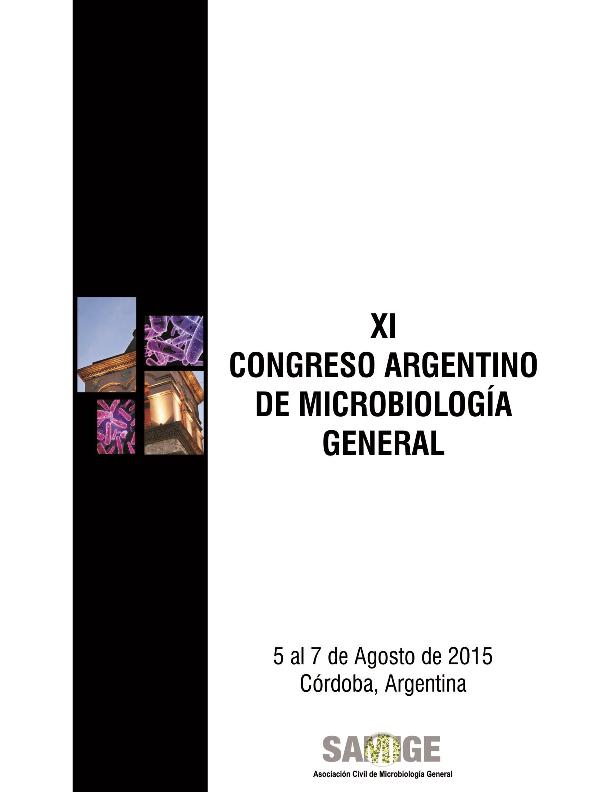Mostrar el registro sencillo del ítem
dc.contributor.author
Grosselli, Melina del Rosario

dc.contributor.author
Aparicio, Juan Daniel

dc.contributor.author
Villegas, Liliana Beatriz

dc.contributor.author
González, Patricia
dc.contributor.author
Almeida, César Américo

dc.date.available
2023-06-23T19:48:25Z
dc.date.issued
2015
dc.identifier.citation
Isolation and use of extremophiles in the determination of biochemical oxygen demand in saline wastewater; XI Congreso Argentino de Microbiología General; Córdoba; Argentina; 2015; 54-54
dc.identifier.uri
http://hdl.handle.net/11336/201377
dc.description.abstract
Biochemical oxygen demand (BOD) is a useful parameter for assessing the biodegradability of dissolved organic matter in water. At the same time, this parameter is used to evaluate the efficiency with which certain processes remove biodegradable natural organic matter. However, the values of BOD in saline water are very low because NaCl destroy the seed. Therefore the incorporation of a suitable selection of bacteria (which is not always easy to obtain) is required. In this sense the extremophile bacteria, particularly halophilic bacteria or halophytes can contribute to the development of this technique. The objective of this work was to develop a BOD analysis protocol for the analysis of saline effluent. Within this context a halophilic microorganisms was isolated from Salinas del Bebedero, San Luis, Argentina. Salt sample was cultured in agar Dussault and Lachance. Subsequently, the isolated colonies were cultured in medium Dussault and Lachance broth for 7 days at 37ºC with constant stirring (180 rpm). Subsequently the nucleic acid extraction method was performed by Brosius et al., based on the lysis of the cells with glass beads, and 10% SDS. To amplify the variable region V3-V5, 16S rDNA primers described as F344-R915 (Stahl et al, 1991) were used: 344F: 5?- ACG GGG CGC YGCAGCAGG GA-3 ?and 915R: 5?- GTG CTC CCC CGCCAATTC CT-3 ?; Halorubrum salsolis DNA was used as control. The size of the reaction products was characterized on agarose gel 1% and evaluated on an image analyzer. The molecular weight was determined by comparison with molecular weight marker 100 bp DNA Ladder (Promega). The PCR fragments were sequenced by Macrogen (Korea), with Reaction Kit READY PRIMS a model ABI prisma373A sequencer (PE AppliedBiosystems). The sequencing results were analyzed by comparison with 16S rRNA genes databases (GenBank). The organism under study under study showed a 100% identity to gender Haloarcula sp. One milliliter of the strain (106 cell per mL) was used as seed in the BOD analysis protocol. Standard solution of glucose-glutamic acid (BOD = 20 mg L-1) with different concentrations of NaCl (5%, 10%, 20%, 30% and 40%) were used. BOD bottles were incubated at 20 °C for 5 days. No significant differences were found among differents samples, since their organic matter content was similar (CV <2.1%). In conclusion, Haloarcula sp can be used in the determination of BOD in saline effluent.
dc.format
application/pdf
dc.language.iso
eng
dc.publisher
Sociedad Argentina de Microbiología General
dc.rights
info:eu-repo/semantics/openAccess
dc.rights.uri
https://creativecommons.org/licenses/by-nc-sa/2.5/ar/
dc.subject
EXTREMOPHILES
dc.subject
BOD
dc.subject
SALINE WASTEWATER
dc.subject
HALOARCULA
dc.subject.classification
Biotecnología Medioambiental

dc.subject.classification
Biotecnología del Medio Ambiente

dc.subject.classification
INGENIERÍAS Y TECNOLOGÍAS

dc.title
Isolation and use of extremophiles in the determination of biochemical oxygen demand in saline wastewater
dc.type
info:eu-repo/semantics/publishedVersion
dc.type
info:eu-repo/semantics/conferenceObject
dc.type
info:ar-repo/semantics/documento de conferencia
dc.date.updated
2023-06-21T15:46:30Z
dc.journal.pagination
54-54
dc.journal.pais
Argentina

dc.description.fil
Fil: Grosselli, Melina del Rosario. Consejo Nacional de Investigaciones Científicas y Técnicas. Centro Científico Tecnológico Conicet - San Luis. Instituto de Química de San Luis. Universidad Nacional de San Luis. Facultad de Química, Bioquímica y Farmacia. Instituto de Química de San Luis; Argentina
dc.description.fil
Fil: Aparicio, Juan Daniel. Consejo Nacional de Investigaciones Científicas y Técnicas. Centro Científico Tecnológico Conicet - Tucumán. Planta Piloto de Procesos Industriales Microbiológicos; Argentina
dc.description.fil
Fil: Villegas, Liliana Beatriz. Consejo Nacional de Investigaciones Científicas y Técnicas. Centro Científico Tecnológico Conicet - San Luis. Instituto de Química de San Luis. Universidad Nacional de San Luis. Facultad de Química, Bioquímica y Farmacia. Instituto de Química de San Luis; Argentina
dc.description.fil
Fil: González, Patricia. Consejo Nacional de Investigaciones Científicas y Técnicas. Centro Científico Tecnológico Conicet - San Luis. Instituto de Química de San Luis. Universidad Nacional de San Luis. Facultad de Química, Bioquímica y Farmacia. Instituto de Química de San Luis; Argentina
dc.description.fil
Fil: Almeida, César Américo. Consejo Nacional de Investigaciones Científicas y Técnicas. Centro Científico Tecnológico Conicet - San Luis. Instituto de Química de San Luis. Universidad Nacional de San Luis. Facultad de Química, Bioquímica y Farmacia. Instituto de Química de San Luis; Argentina
dc.relation.alternativeid
info:eu-repo/semantics/altIdentifier/url/https://samige.org.ar/wp-content/uploads/2022/10/Libro-SAMIGE-2015.pdf
dc.conicet.rol
Autor

dc.conicet.rol
Autor

dc.conicet.rol
Autor

dc.conicet.rol
Autor

dc.conicet.rol
Autor

dc.coverage
Nacional
dc.type.subtype
Congreso
dc.description.nombreEvento
XI Congreso Argentino de Microbiología General
dc.date.evento
2015-08-05
dc.description.ciudadEvento
Córdoba
dc.description.paisEvento
Argentina

dc.type.publicacion
Book
dc.description.institucionOrganizadora
Sociedad Argentina de Microbiología General
dc.source.libro
XI Congreso Argentino de Microbiología General
dc.date.eventoHasta
2015-08-07
dc.type
Congreso
Archivos asociados
